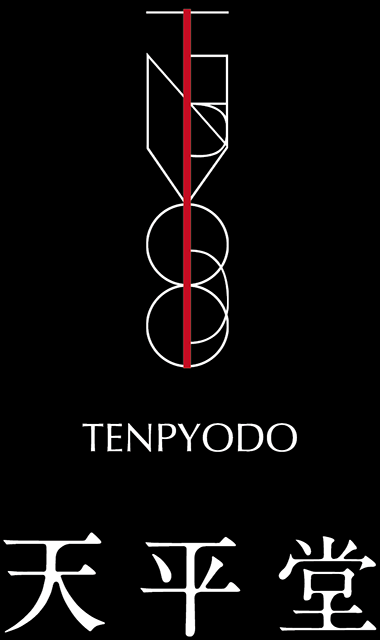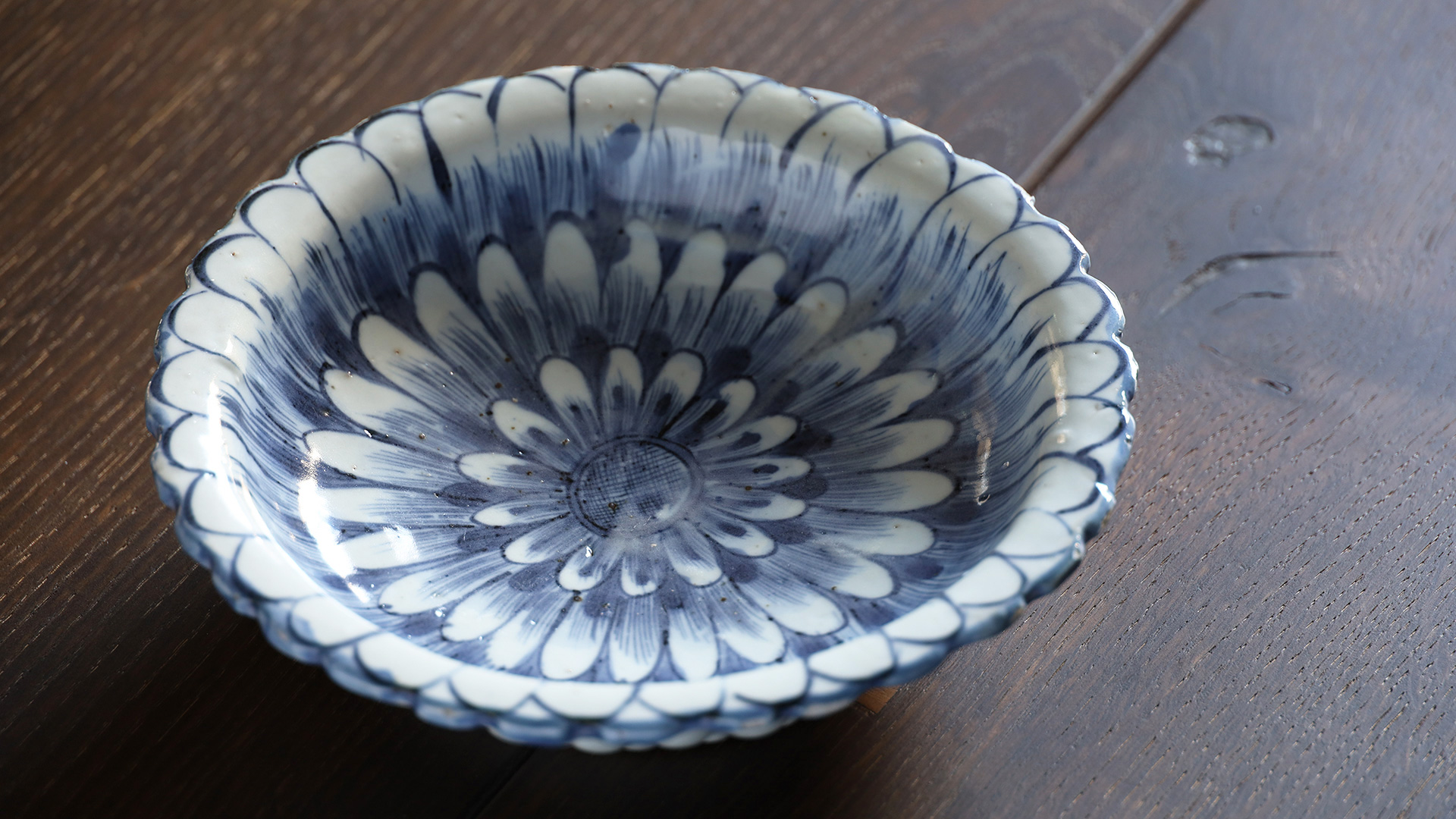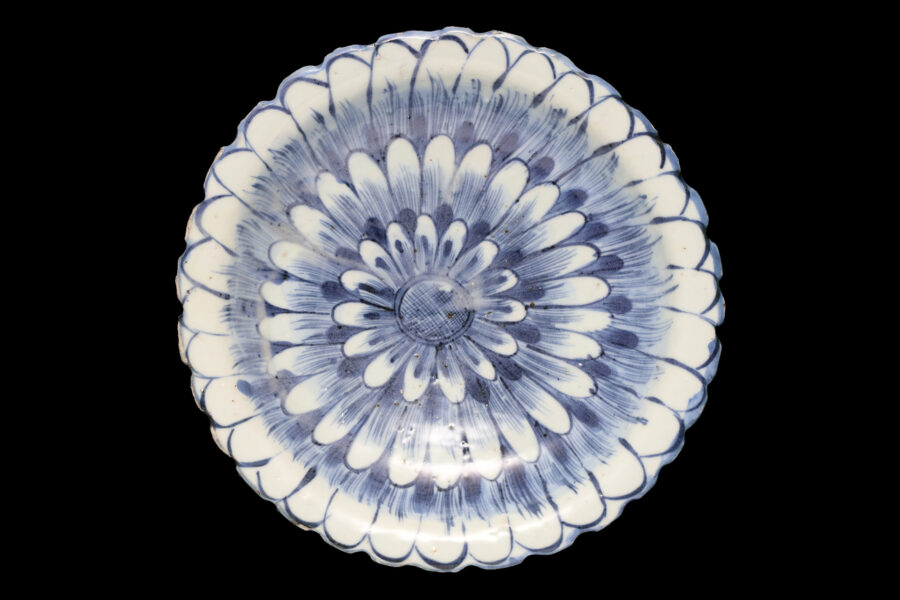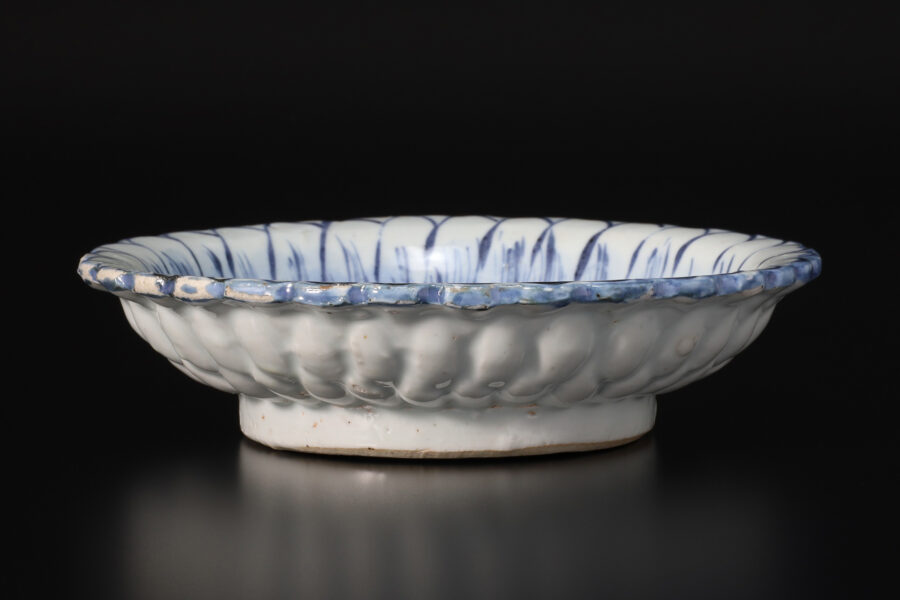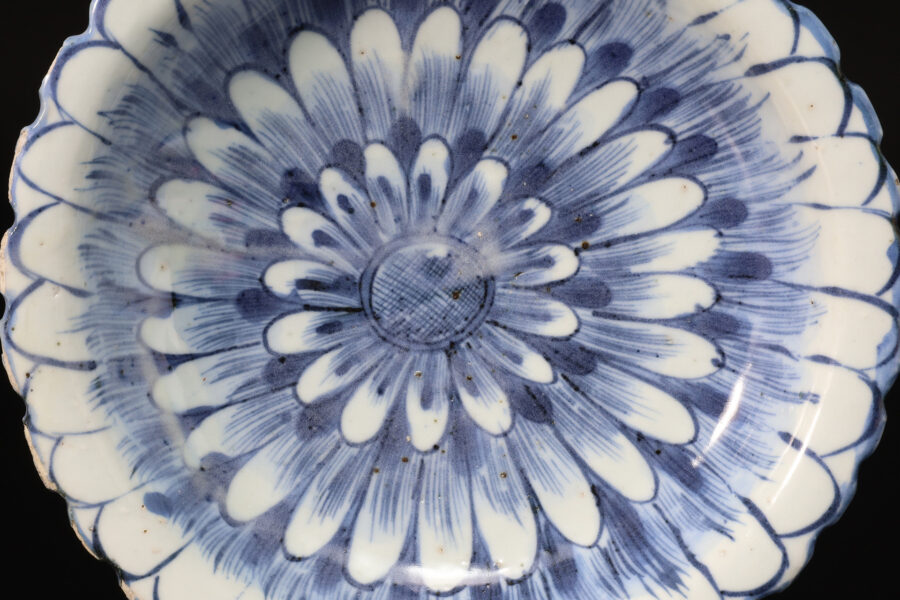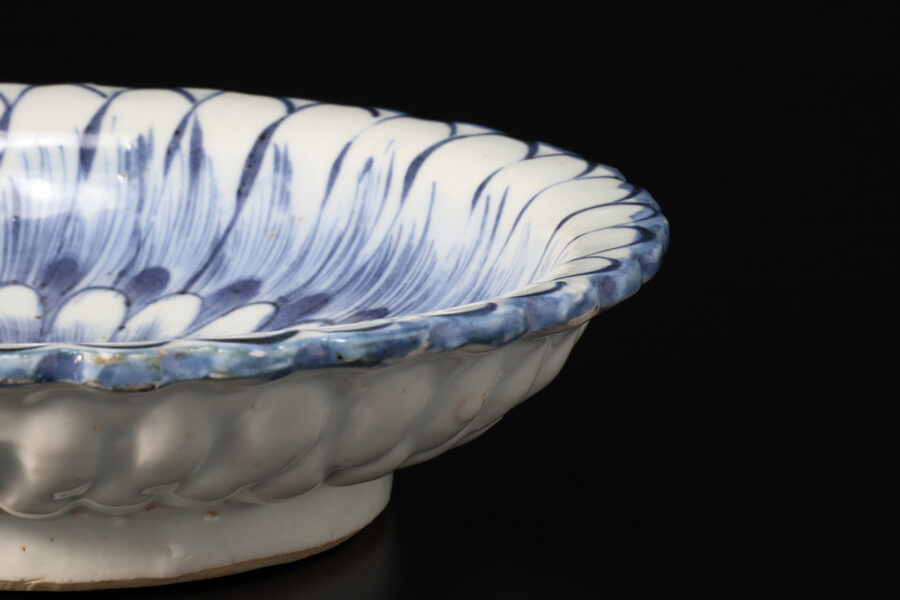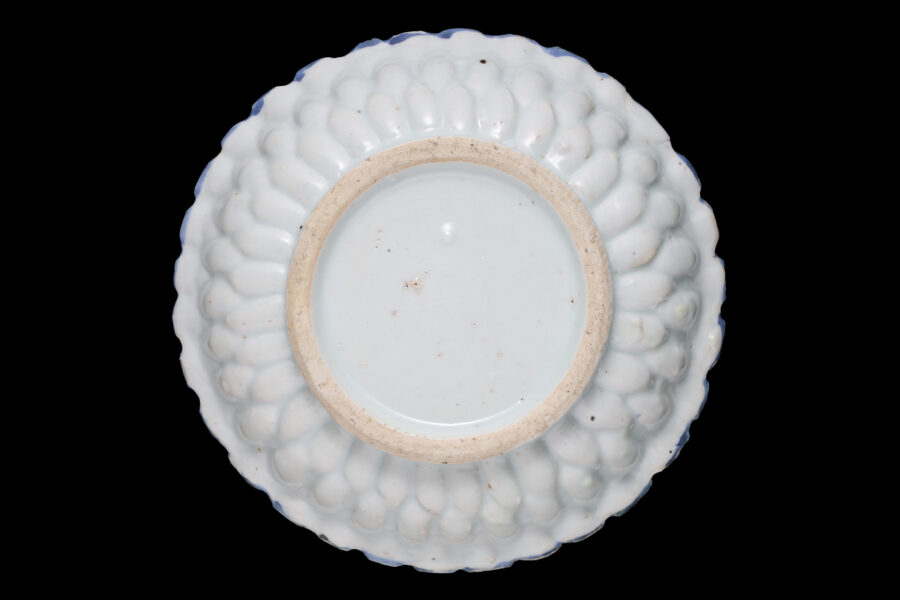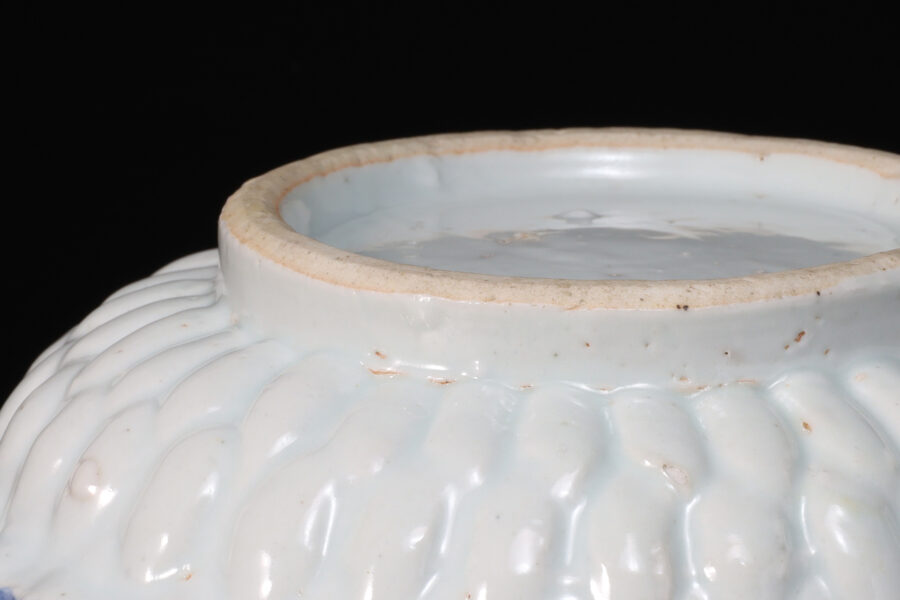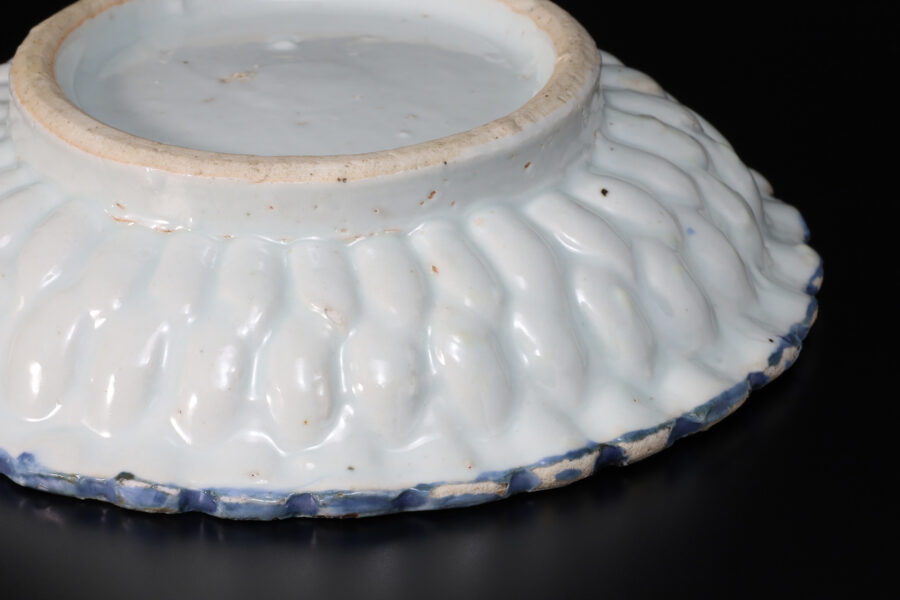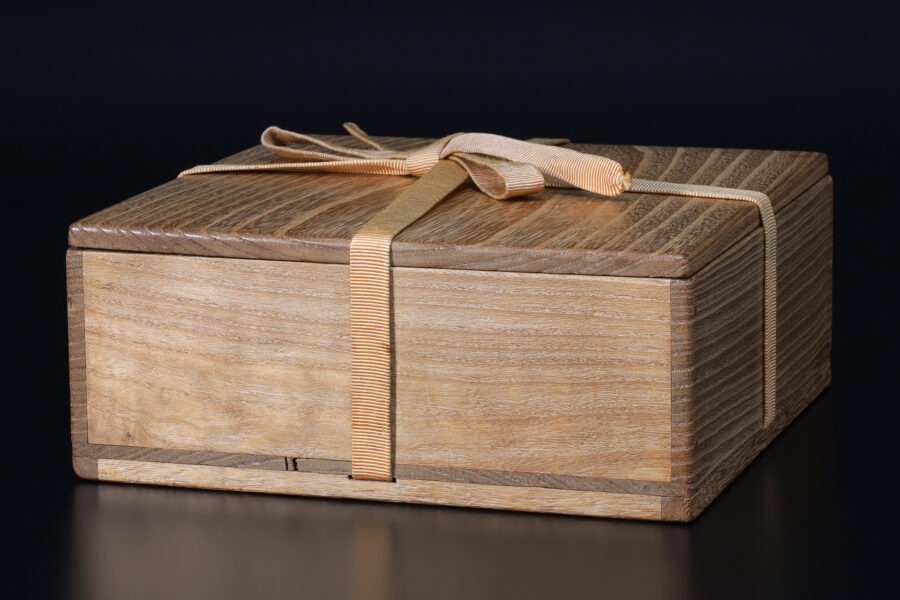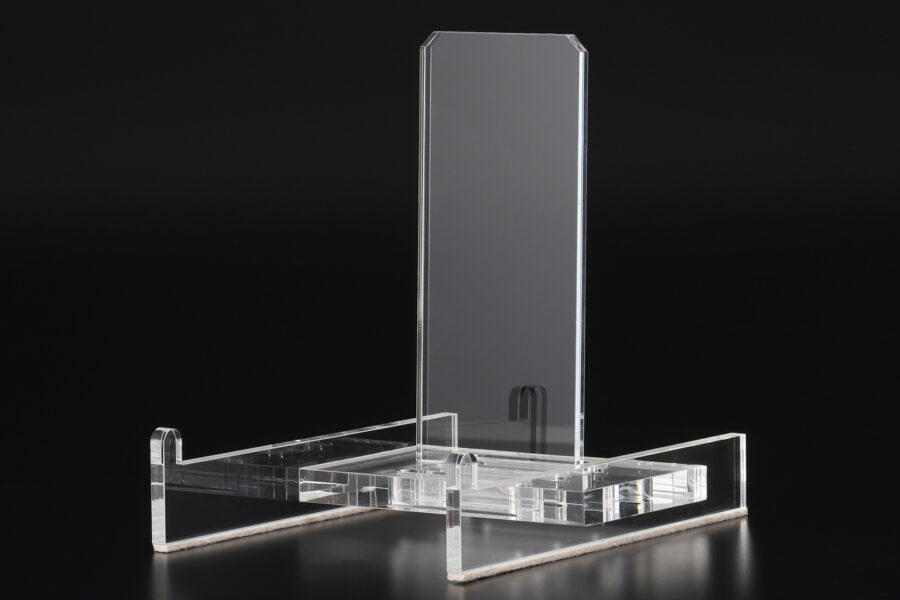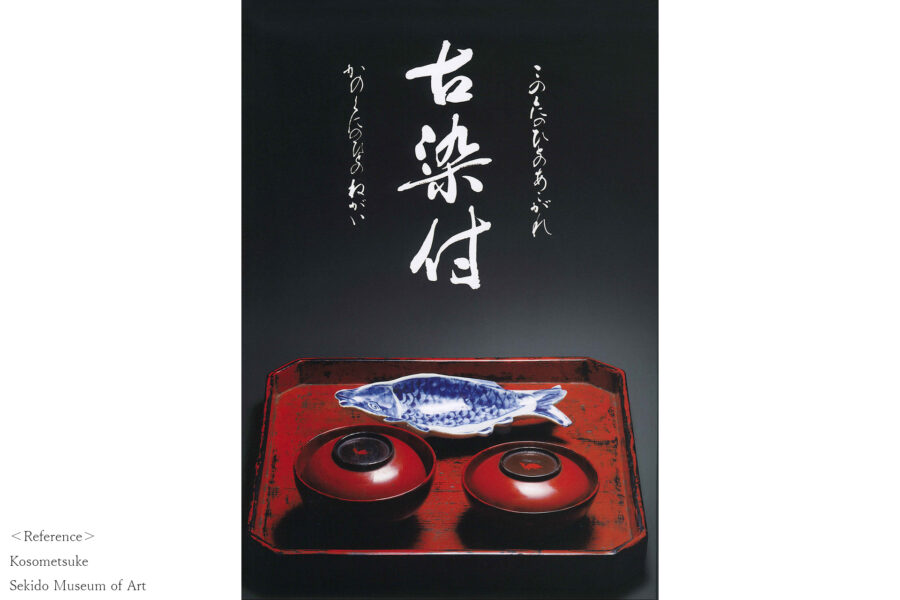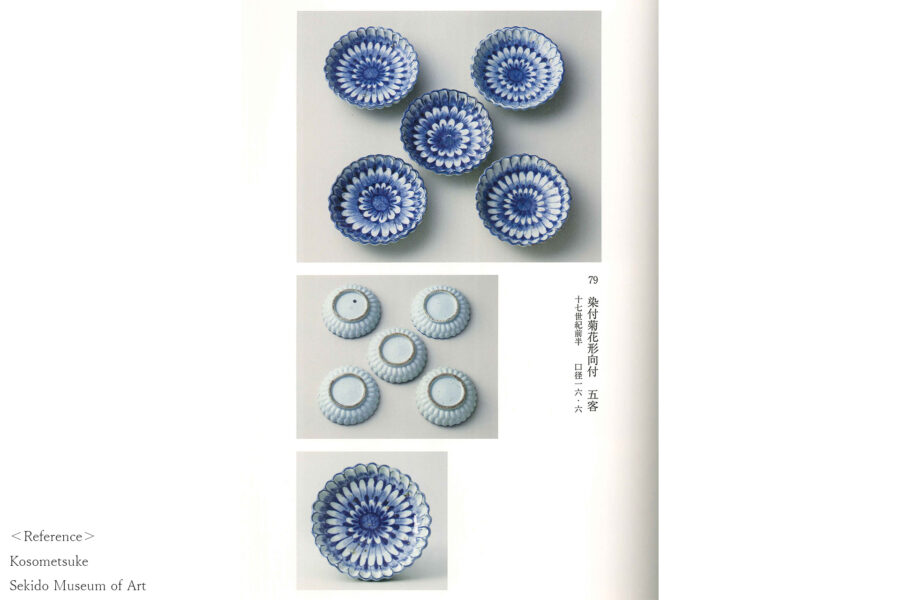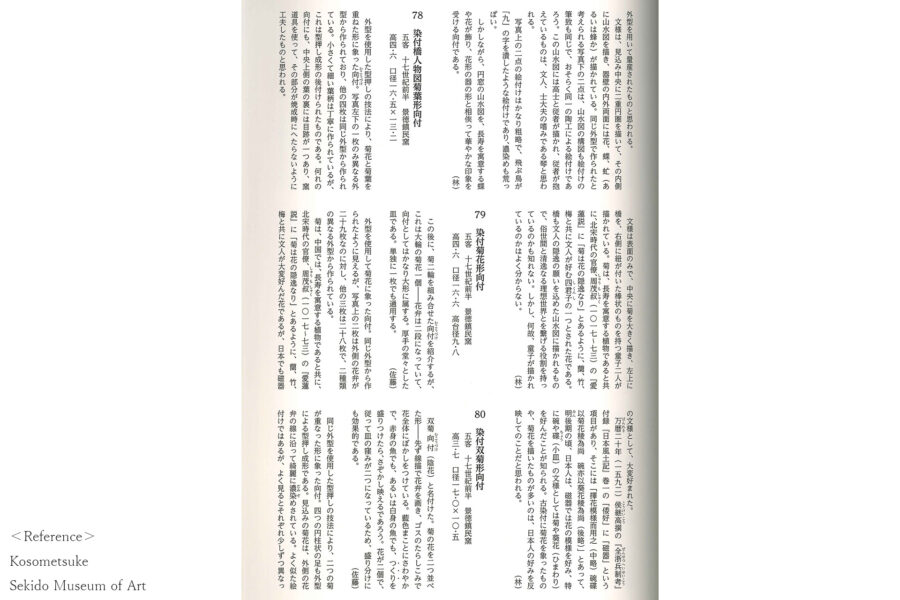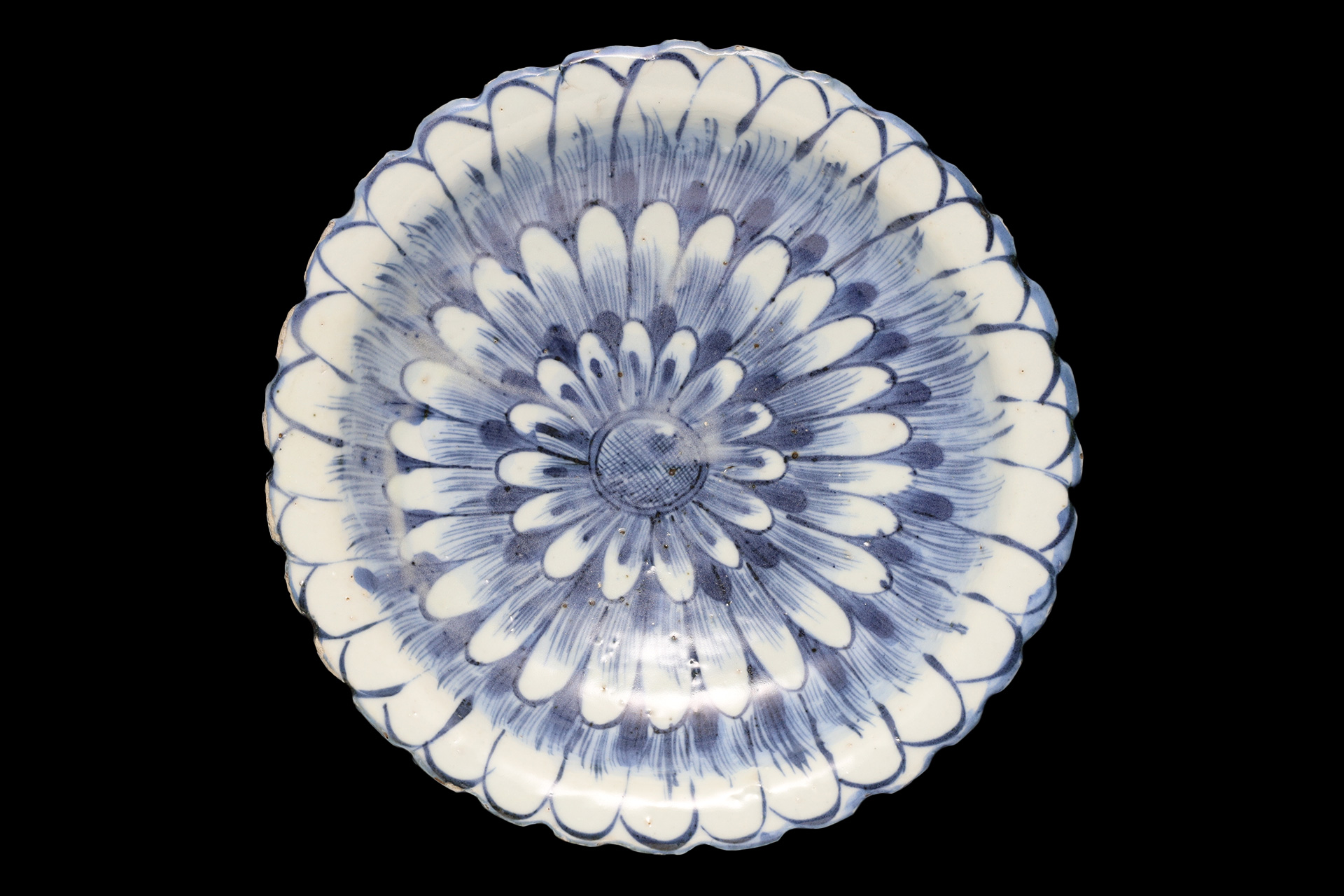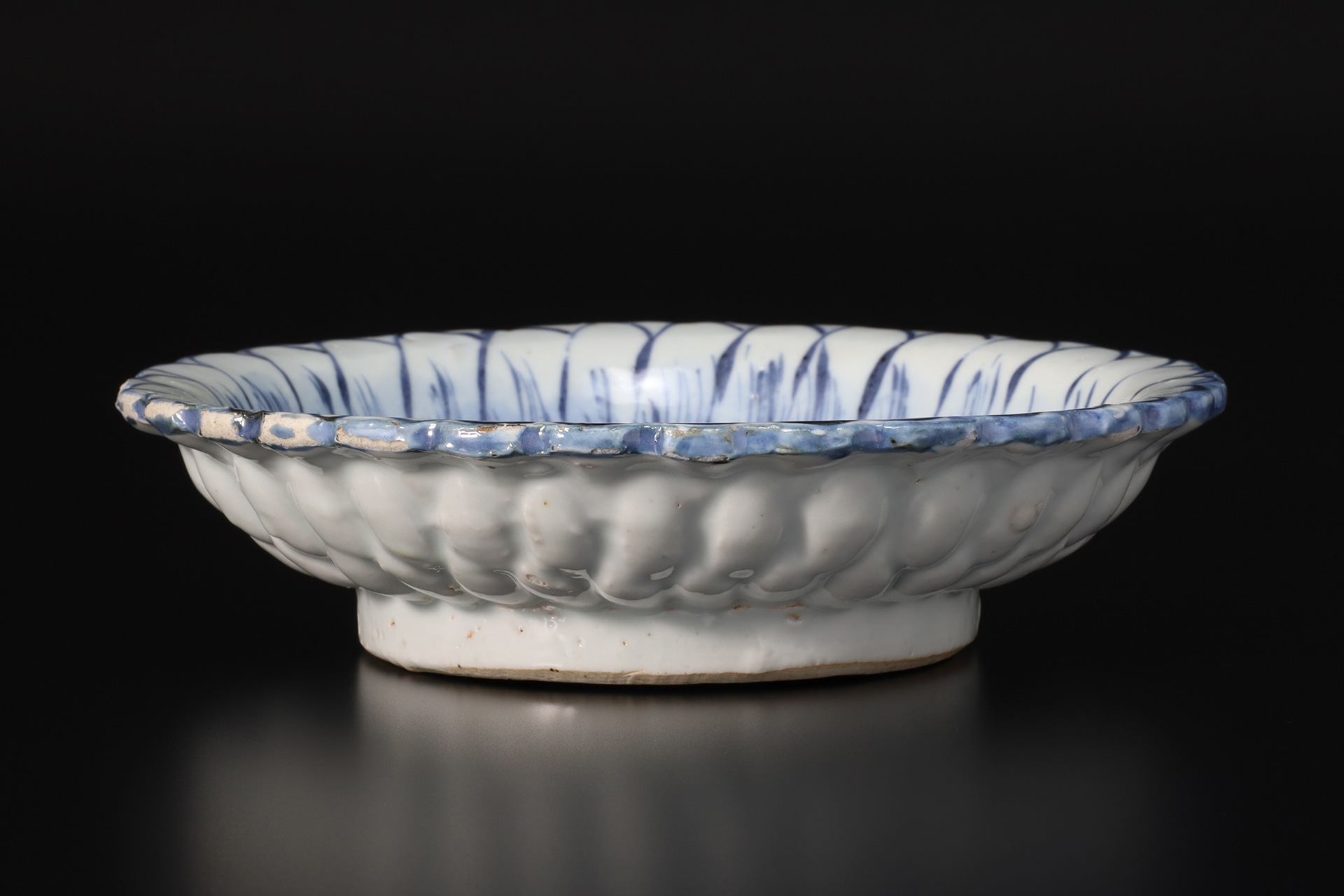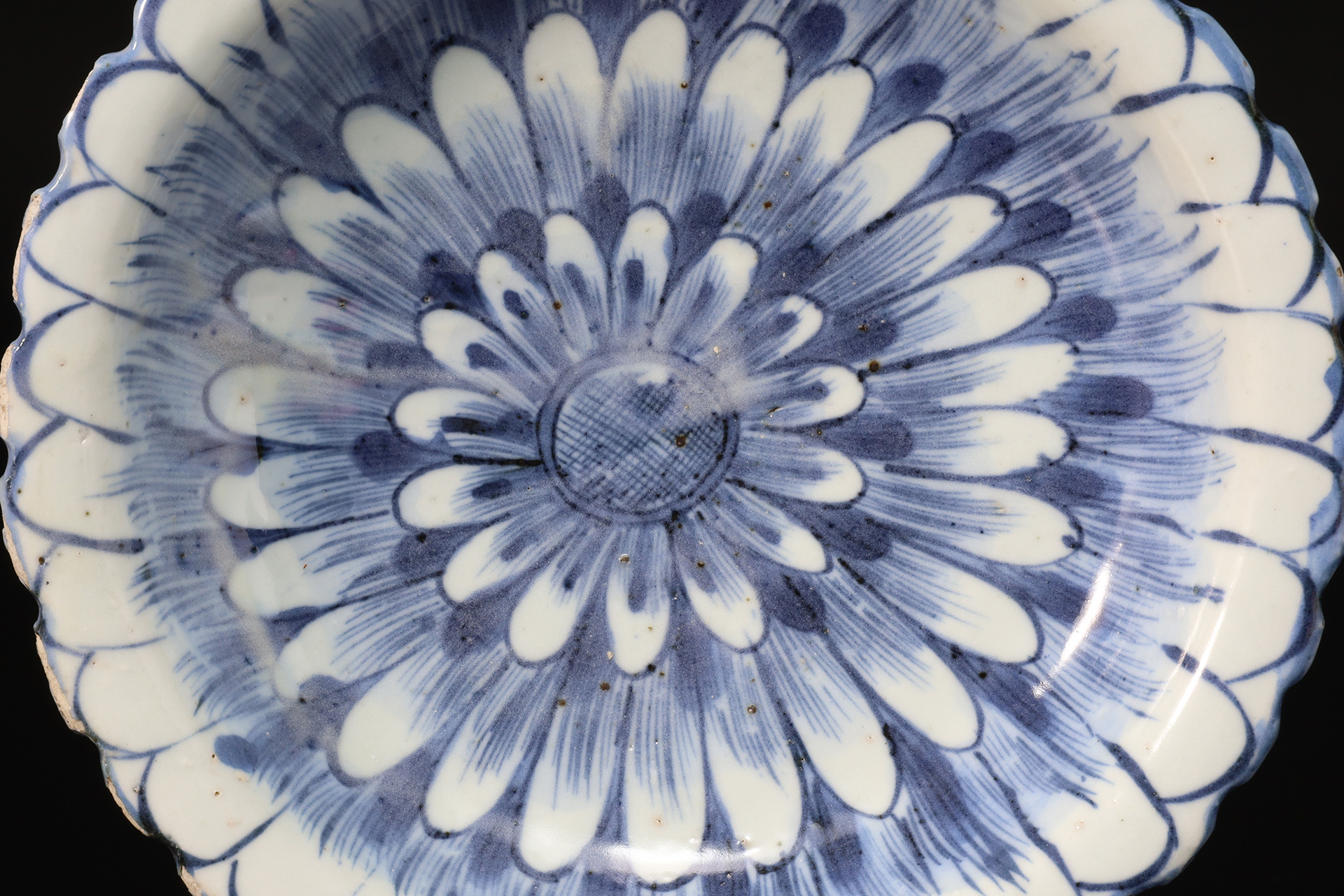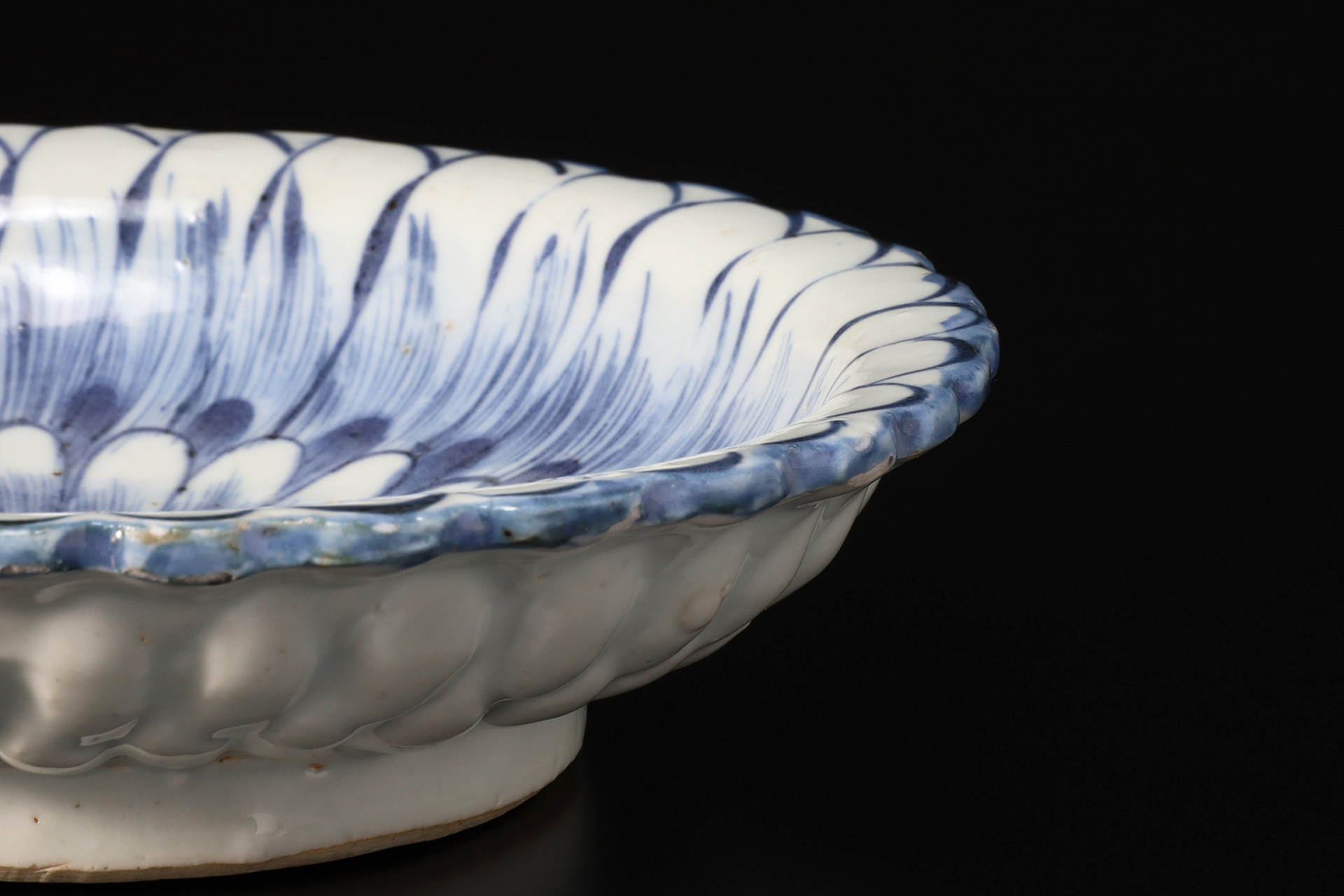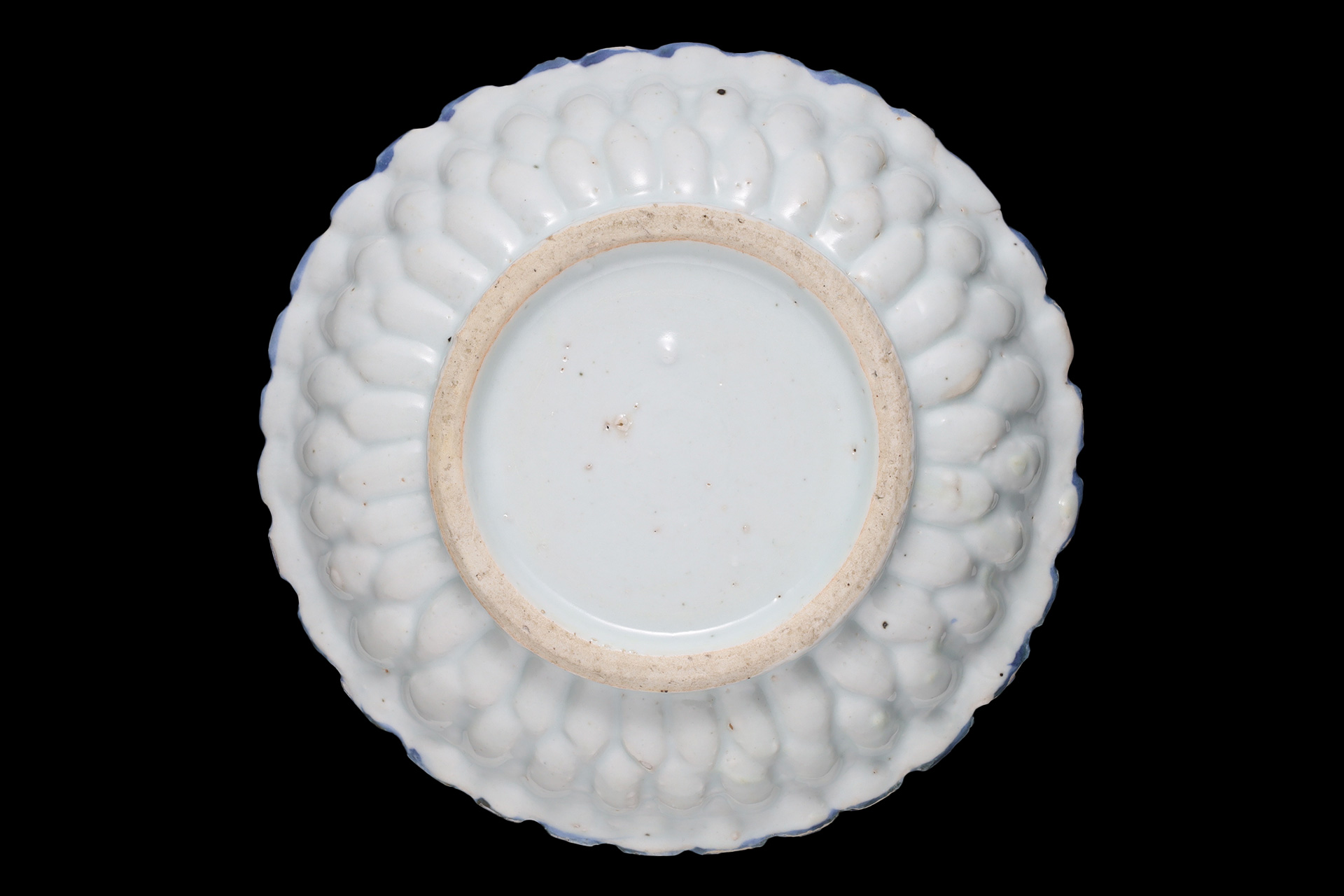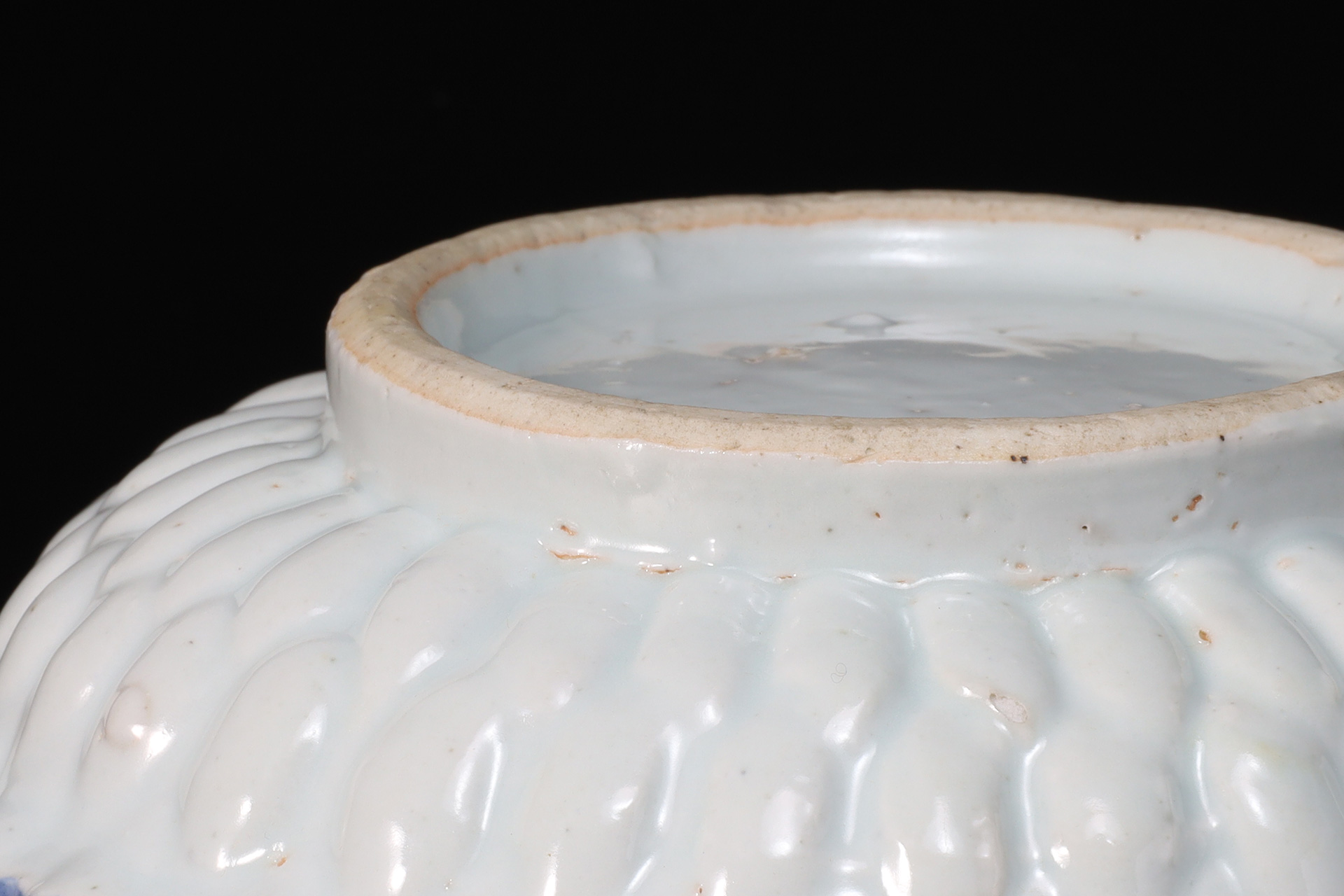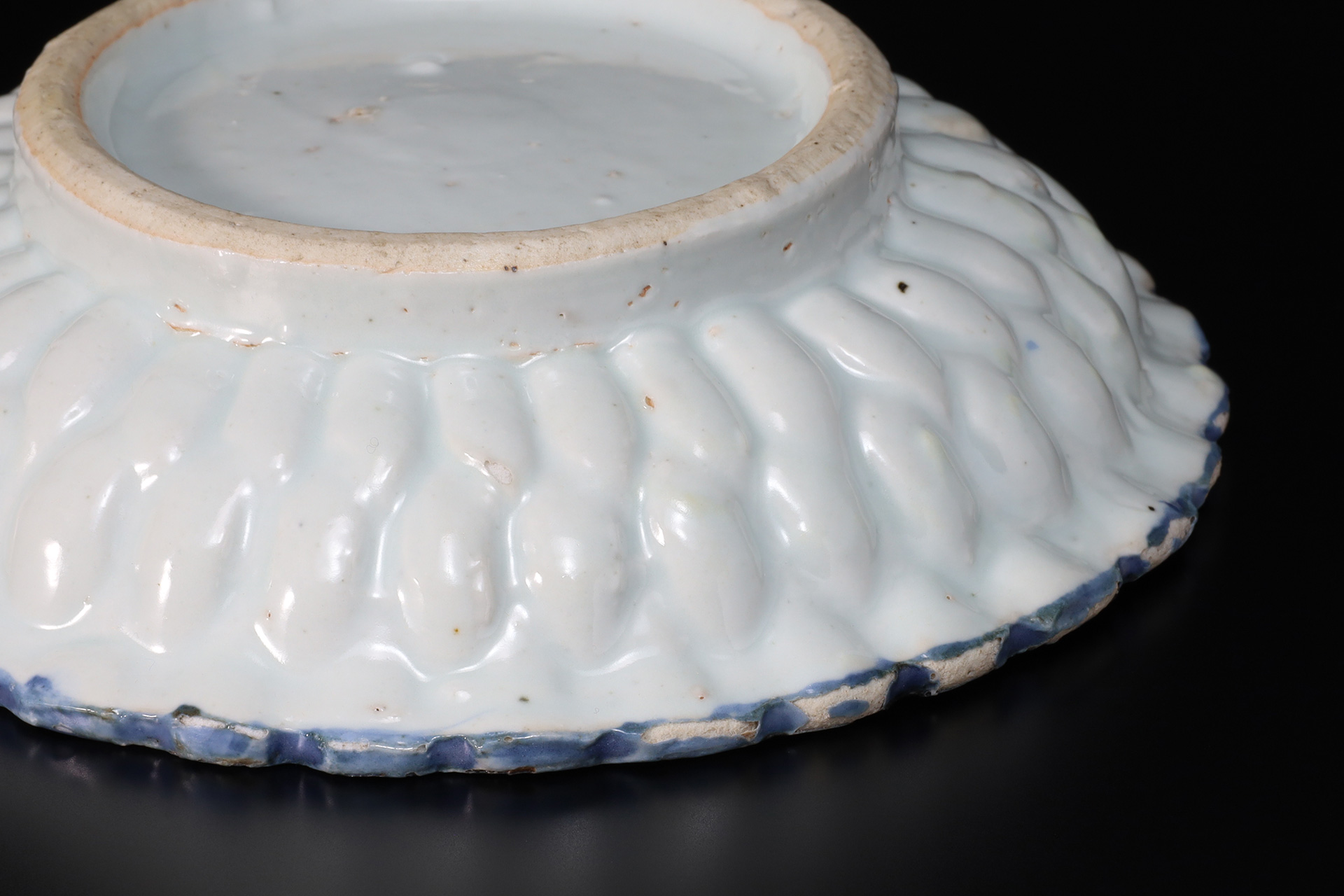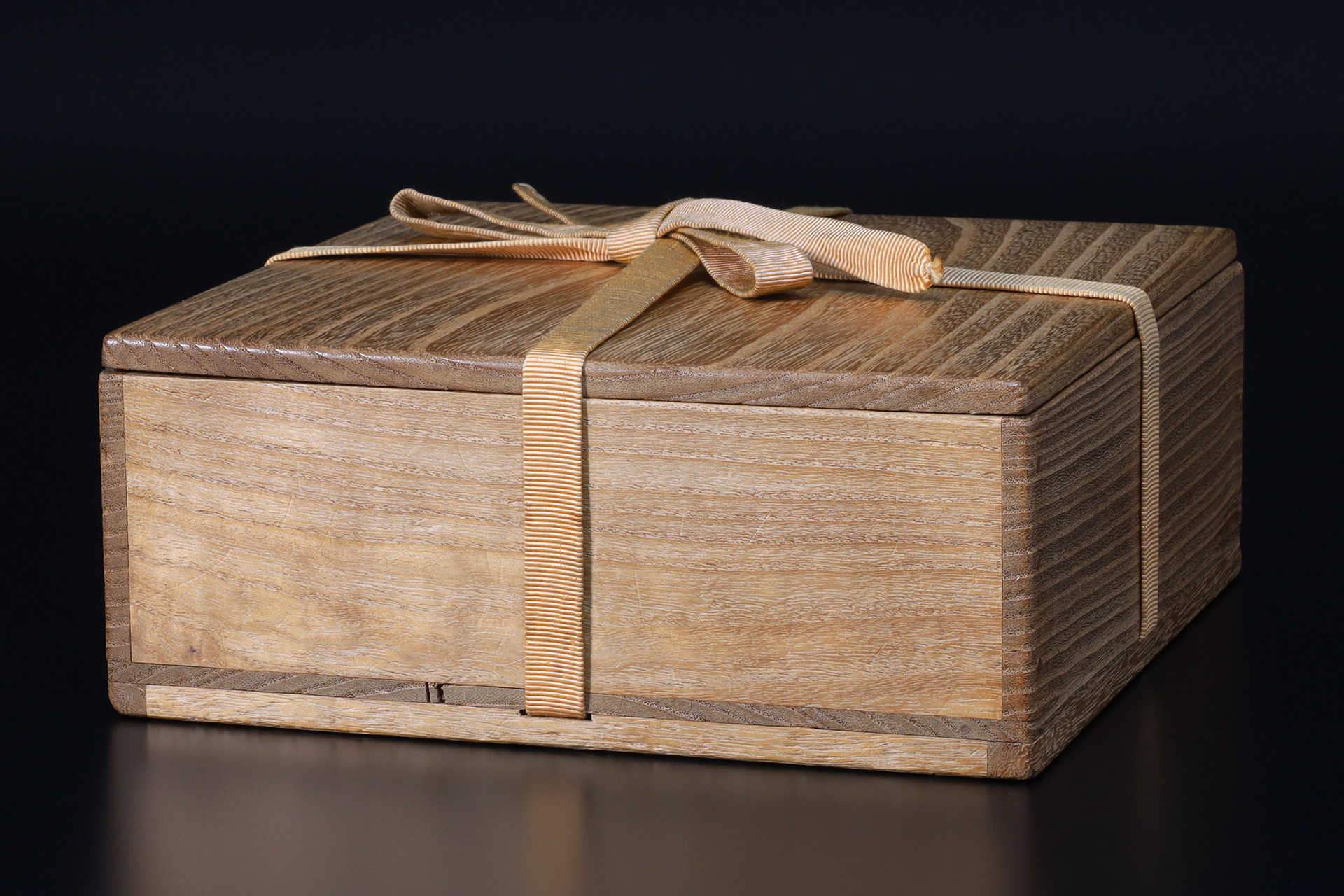This is the tea pottery called kosometsuke that was specially ordered by japanese tea master as the kaiseki utensil(mukozuke). The chrysanthemum shape, created by stamping using an external mold, is thick and has clear irregularities, reminiscent of pottery. The brilliant blue-and-white color and outstanding design set it apart from ordinary works. It is over 18.0cm in size and has a dignified presence.
Inquiry
- Product Code
- 250108-2
- Period
- Ming Dynasty
Early 17th century
- Weight
- 547g
- Diameter
- 18.4cm
- Height
- 4.6cm
- Bottom Diameter
- 10.3cm
- Description
- Paulownia Box(There is a scratch on the bottom)
Acrylic Dish Stand
- Condition
- Excellent Condition(There are mushikui at the edge)
The base, blue-and-white coloring, and firing are ideal, and they are in excellent condition.

Ko-Sometsuke
Ko-Sometsuke refers to a distinctive group of blue-and-white porcelain fired at the Jingdezhen kiln during the late Ming Dynasty, particularly in the Tianqi Era(1621–27). A distinct group of blue-and-white porcelains, known as Ko-Sometsuke, is cherished as a category of its own, characterized by unique stylistic features. In contrast to the Qing Dynasty Shin-watari(New Imports), these works belong to the older tradition of Ko-watari(Old Imports), and many surviving examples were transmitted to Japan. Following the death of the Wanli Emperor, the Jingdezhen imperial kiln was shut down, and Jingdezhen private kiln assumed control over both production and distribution. Many potters who had once served in the Imperial kiln moved to Private kiln to sustain their livelihoods, leaving behind works that still reflect the refinement of official ware. A significant portion of these works are classified as Ko-Sometsuke and Shonzui. Ko-Sometsuke is broadly divided into two categories: tea pottery commissioned by Japanese tea masters, and everyday utensils for general use. As tea pottery, Ko-Sometsuke works were crafted in imitation of the thick-bodied forms favored by Japanese tastes, characterized by substantial walls and a bold, vigorous presence. In the late Ming Dynasty, Japanese tea masters actively commissioned the production of novel tea utensils, seeking works that reflected their individual aesthetic sensibilities. Many Ko-Sometsuke works exhibit a phenomenon in which the glaze flakes away due to differences in shrinkage between the base and the glaze, exposing the underlying base. This effect, resembling insect bites, is poetically referred to as “Mushikui”. This phenomenon is most commonly observed along the rim and at corner, where the glaze tends to be applied more thinly. Though typically regarded as a flaw in conventional ceramics, tea masters discerned in it a natural elegance, appreciating its rustic simplicity as a form of aesthetic expression.
